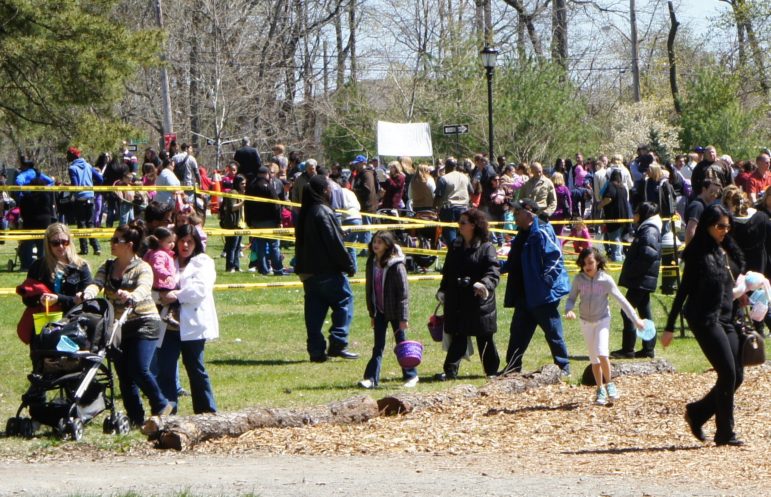
MikeinNYC
An Easter Egg Hunt in Tottenville, Staten Island, where a recent DOHMH survey found that a higher than average share of residents believes their neighbors are helpful.
Growing up in the Patterson Houses in the South Bronx, my neighbor Titi Pura loved me like her own granddaughter. She was my babysitter, and she attended to all of my needs while my parents worked. One of my fondest memories was going to Saint Rita church with Titi, where my neighbors would hug and kiss me during mass as they said, “Peace be with you” in Spanish. These were the same neighbors I would see in other parts of the community and who would smile at me and talk with my parents.
Today, in my public health career, I have come to realize the full impact of the neighbors who enriched my life. Our health is tied to our relationships. One Health Department study, for example, found that women with one or no social ties were more than twice as likely to experience postpartum depression compared to women with four or more social ties. Social isolation can also lead to mental health risks, as evidenced in our research on older New Yorkers.
In order to gain a deeper understanding of how emotional support and social connections affect New Yorkers, the Health Department recently undertook a new effort to gather and analyze data for the new Community Health Profiles, our comprehensive report on the health of 59 neighborhoods across New York City, and Take Care New York 2020, the city’s blueprint to improve the health of New Yorkers.
These reports have always included surveillance on the social determinants of health, or the large systemic challenges – such as poor education, incarceration and high housing costs – that drive negative health outcomes and have contributed to generations of persistent racially-based health inequities. However we know that relationships and community can also contribute substantively to mental health and wellbeing.
So for the first time through our Community Health Survey, we asked 10,000 New Yorkers to answer, “Do you agree that people around your neighborhood are willing to help their neighbors?”
The results of the survey found that 72 percent of New Yorkers report that their neighbors are willing to help one another. And across the city, 40 of 59 neighborhoods had rates that were similar to the citywide average, showing that most communities did not differ in their perception of the helpfulness of their neighbors.
When we looked at specific neighborhoods, eight communities had higher percentages of people who agree that their neighbors help one another: Tottenville-Great Kills and South Beach-Willowbrook in Staten Island; Bayside-Little Neck and Rockaway-Broad Channel in Queens; Washington Heights-Inwood in Manhattan; Park Slope-Carroll Gardens and Flatlands-Canarsie in Brooklyn; and Throgs Neck-Co-op City in the Bronx.
Eleven communities have rates lower than the citywide average: in Manhattan, the Upper East Side; in Queens, Elmhurst-Corona; in Brooklyn, Bedford Stuyvesant; and in the Bronx: Mott Haven-Melrose, Hunts Point-Longwood, Highbridge-Concourse, Morrisania-Crotona, Belmont-East Tremont, Kingsbridge Heights-Bedford, Fordham-University Heights and Parkchester-Soundview.
While the new data are preliminary, they will contribute to our efforts to improve health equity going forward. We have already seen the profound benefits of programs where neighbors collaborate to improve the health of their neighborhood, like the Harlem Health Advocacy Partners, a community health worker initiative which offers over 600 wellness activities to thousands of NYCHA residents in East and Central Harlem; the Mural Arts Project, which pairs muralists with community members to create large-scale paintings about reducing stigmas in mental health; and Healthy Start Brooklyn at the Neighborhood Health Action Center in Brownsville, which gives resources for mothers to take care of themselves and their baby.
Our goal as a Health Department is to spark a conversation about how we can create social connections – be it art projects, walking groups or meet-ups for new parents – so New Yorkers will come together in meaningful ways to make their neighborhoods healthier places to live.
Dr. Oxiris Barbot is New York City’s Health Commissioner.








